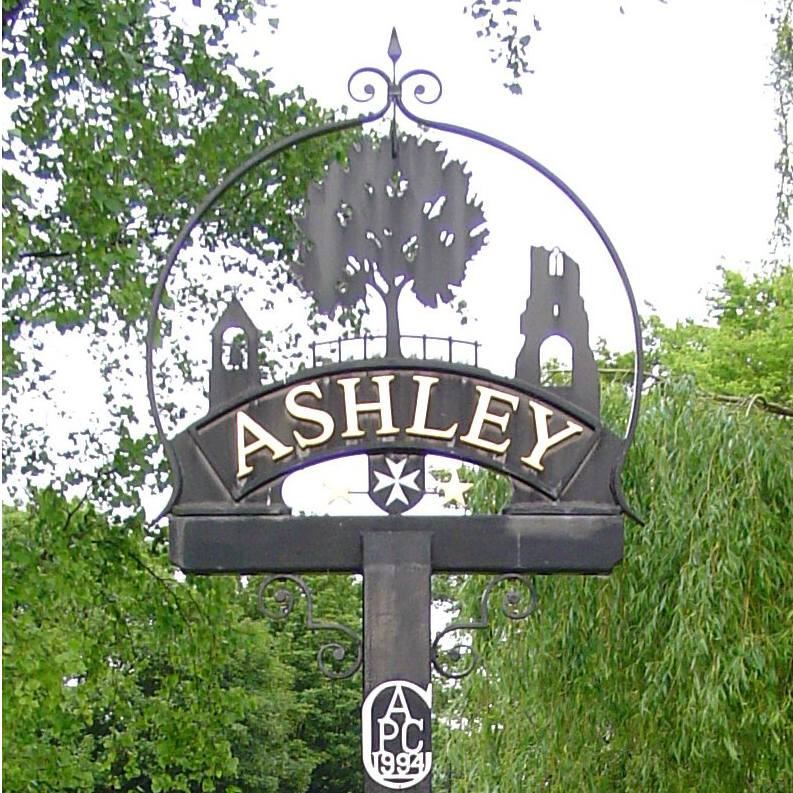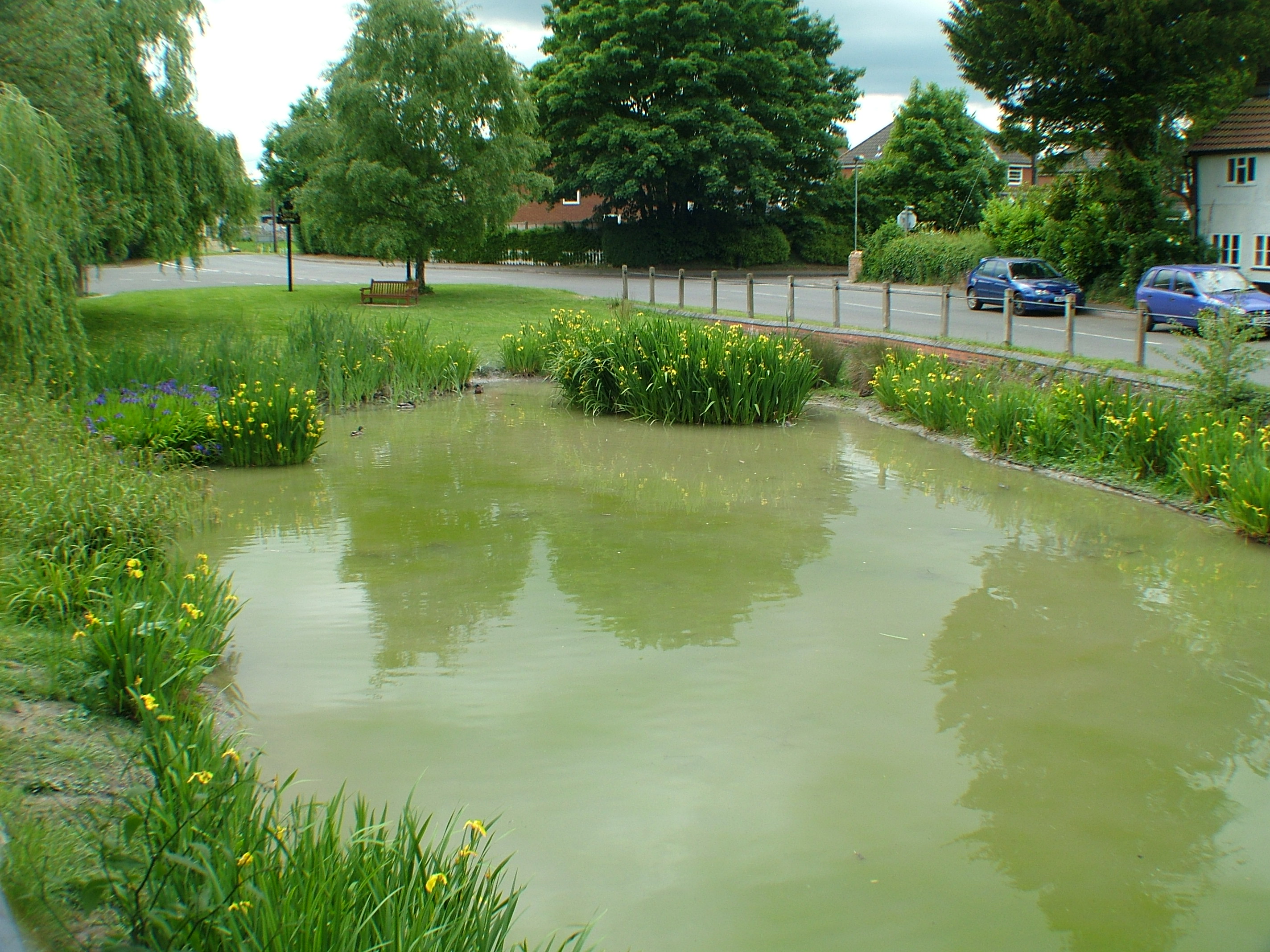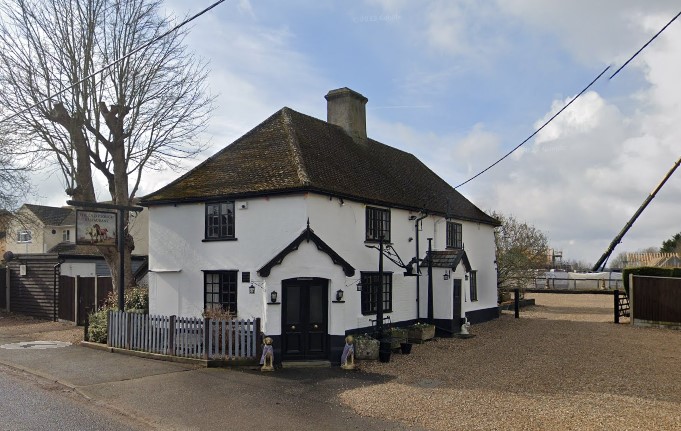History of Ashley
Ashley-cum-Silverley is commonly known simply as Ashley. The two parish manors of Ashley and Silverley were owned and have been assessed for tax together since at least 1066. Although Silverley has always been the larger of the two parishes, in 1299, it was successfully claimed that Silverley was a hamlet of Ashley and with it formed one township and one tithing. Taxes in the C14 were laid on ‘Ashley with Silverley’ and the ecclesiastical parishes were united c1550 when both parish churches were abandoned.
Both parishes were small and settled relatively late; Silverley had only 22/23 families in 1086 and Ashley perhaps half as many. In 1327 only 16 people paid taxes, this is amongst the smallest numbers in the county. The population rose to approx. 160 in 1603, continued to rise slowly between 1700 and 1750, and grew more quickly between 1750 and 1800. In 1801 the population stood at 272, rising to 562 in 1871, although it then declined during the 1870s and 1880s. In 1901 it had risen again to 584 and during the C20 numbers fell slowly at first, eventually stabilising after 1945 at between 450 and 500.
From the late 13th century Ashley and Silverley shared open fields, common pastures and had unified lordship. Many tenants held land in both parishes. The open fields were small and numerous, which was typical in East Anglia.
In 1086 there were two large manorial farms, but between 1250 and 1350 there was an active land market and a rapid turnover in landowning families. Between 1950 and 1986 the number of farms fell from eleven to four. Agriculture still employed 68 people in 1950, but barely a dozen in the 1970s and 1980s.
Woodland clearance in Anglo-Saxon times produced small, scattered settlements. The parish churches presumably stood on 10thor 11thcentury manorial sites. Clearance and the rising population added to the dispersed pattern. By the 13thcentury both manor houses had moved to moated sites on the plateau at the centre of the parish, and at the lost ‘Hunts Green’ (apparently near Silverley church) there were at least six houses.
Settlement was concentrated on the site of the modern village, around Wood Green and Waver Pond by 1300. The Hospitallers, who were lords of the manor (near the modern Ashley Hall) and owners of a chapel on The Green, may have hastened this shift in development. This private chapel served as the parish church after the abandonment of the parish churches when the benefices of Ashley and Silverley were united in the 16thcentury. After the new parish church was opened in 1845, the chapel was used first as school and later for storage, but was demolished approx. 1956.
Wood Green apparently lay in Silverley since two villeins of Silverley Manor had cottages there circa 1240, but the village came to be called Ashley, probably because the Hospitaller manor had that name. In the 13thcentury, two other groups of four and seven cottages stood near Wood Green, the larger group including the rector of Silverley’s house. The creation of a village at Wood Green involved the abandonment of crofts elsewhere that were then ploughed up and incorporated into adjoining fields, their names falling into disuse.
The name Wood Green was replaced by Ashley Green in the 17thcentury and the green survived until 1814 when its central part was enclosed and divided among 16 owners of property in the parish. Until then, the cottages and farms of the village stood in irregular crofts around the perimeter of the green and along the roads to Newmarket, Moulton (Mill Road), Dalham (Church Street) and Silverley (High Street). Later in the 19thcentury most of the allotments and other land north of the green were built over with cottages. Many older cottages were condemned and demolished in the 1930s and in 2001 no more than half a dozen houses built before 1700 survived.
In 1670 there were approximately 40 dwellings in the parish as a whole; in 1801 there were still only 38 houses, although several were subdivided. The total number of houses grew to 100 by 1851, but not again until the 1890s, reaching 129 in 1901. There was a further increase after 1945 with numbers of properties rising to 219 in 1991. Much of the new building was of council houses, including some post- war prefabs, which were pulled down in the later 1980s and replaced by sheltered housing for the elderly and housing association properties.



